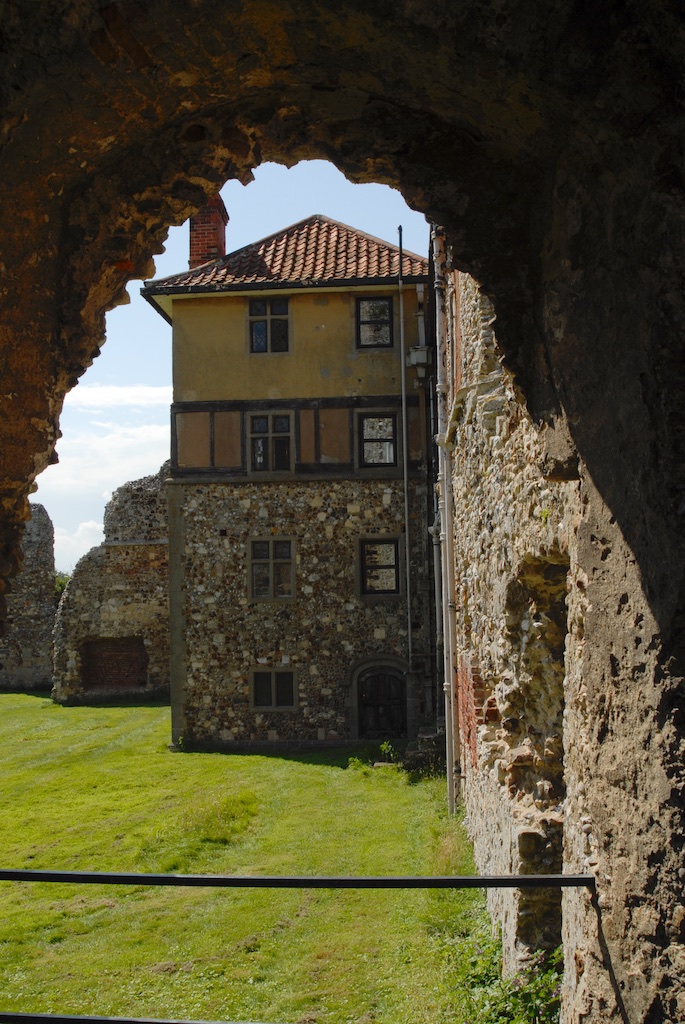Pictures of buildings mentioned in the second edition “Suffolk” volume of “The Buildings of England” series by Sir Nikolaus Pevsner.
The third edition encapsulates Leiston well when it says "Two institutions have dominated Leiston: from 1365 to 1537 the abbey, and from 1778 to 1980 the engineering works of Richard Garret and Sons."
As usual there is much more depth in the third edition but we will head back to the second edition to see what Pevsner himself thought. After the church he mentions The Cupola - I could not find this and it has gone from the third edition. After that "Leiston Hall, W of the church. Symmetrical front of red brick with two projecting wings carrying shaped gables. The date probably the later C17." Seen here:
As usual there is much more depth in the third edition but we will head back to the second edition to see what Pevsner himself thought. After the church he mentions The Cupola - I could not find this and it has gone from the third edition. After that "Leiston Hall, W of the church. Symmetrical front of red brick with two projecting wings carrying shaped gables. The date probably the later C17." Seen here:
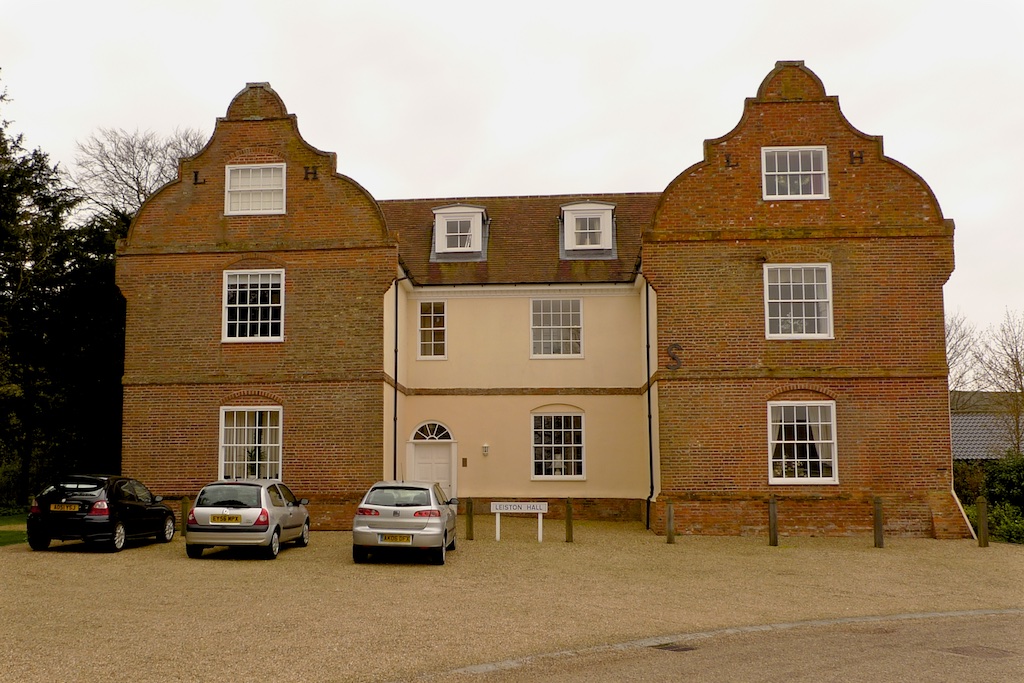
Moving on, Works House (Messrs Richard Garrett, Engineering Works) : "Facing the street the dwelling house of four bays with two adjoining doors separated and framed by three recessed Tuscan columns. This façade is of c1820-30, though the house itself is older. Behind, among the buildings, the Main Office of c 1830-40 and the Long Shop of 1852. The latter was at the time a model workshop." Four views here:
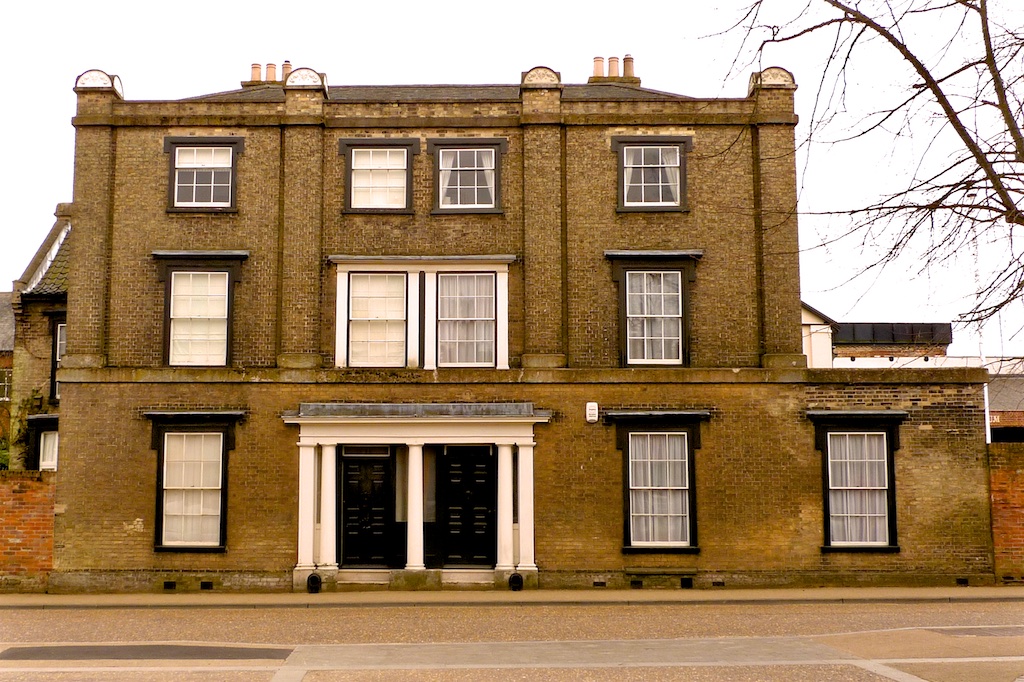
Works House
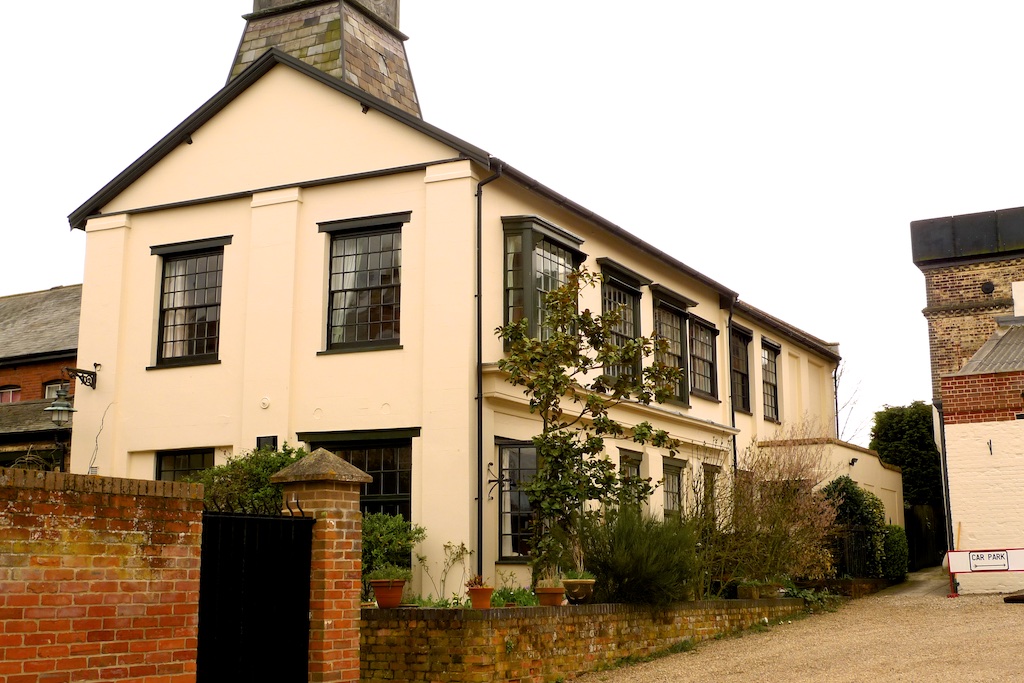
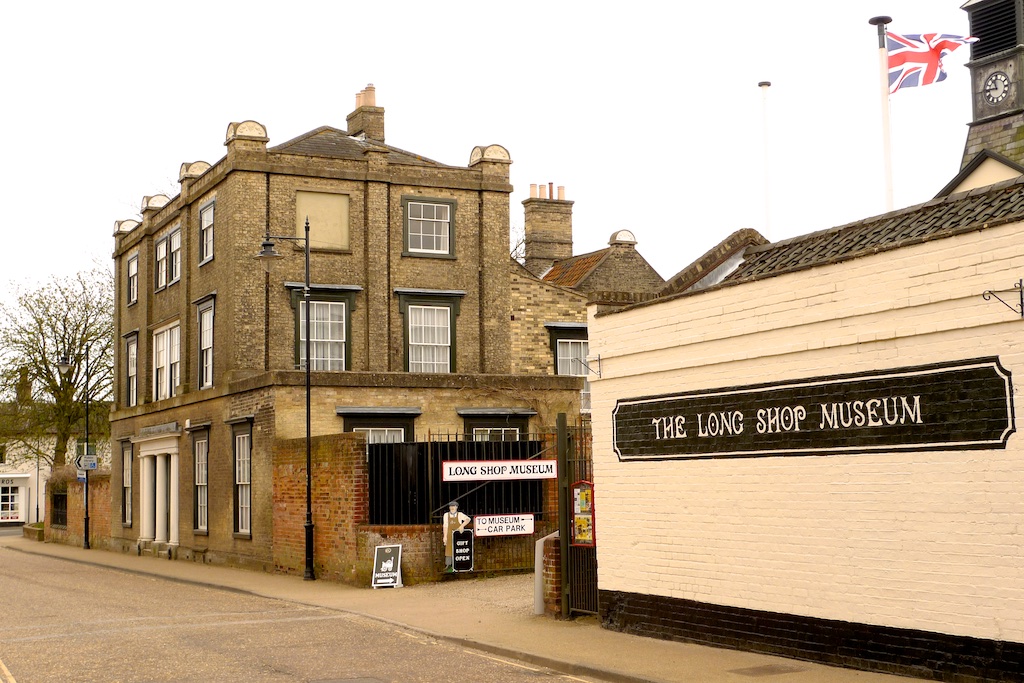
Works House by entrance
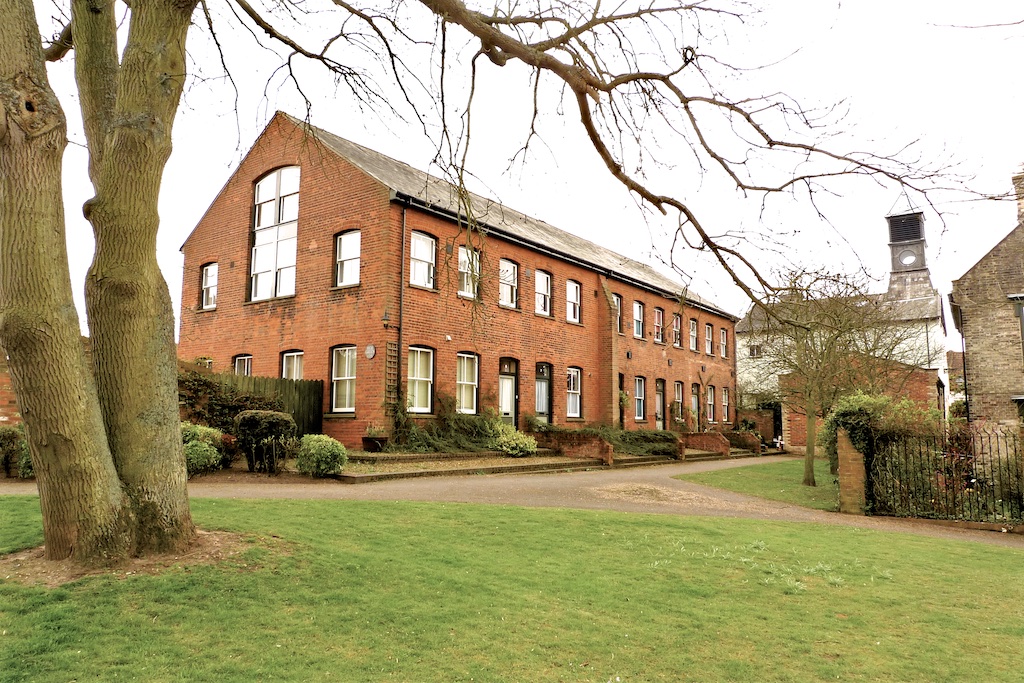
Works buildings
On now to Leiston Abbey of which Pevsner says: "Founded for Premonstratensian Canons in 1182. The founder was Sir Ranulf Glanville, Lord Chief Justice. Transferred to the present site in 1363 and rebuilt there and after a fire of 1382. The church, farmhouse and Guesten Hall are all described in depth in the third edition, the latter two not at all in the second. Some views follow:
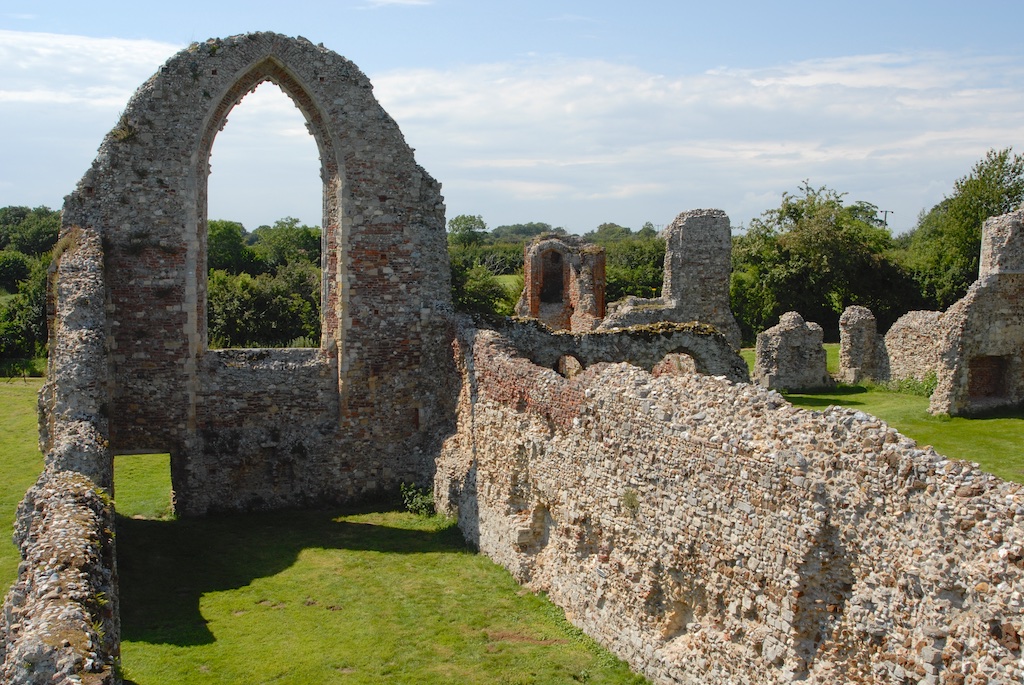
.
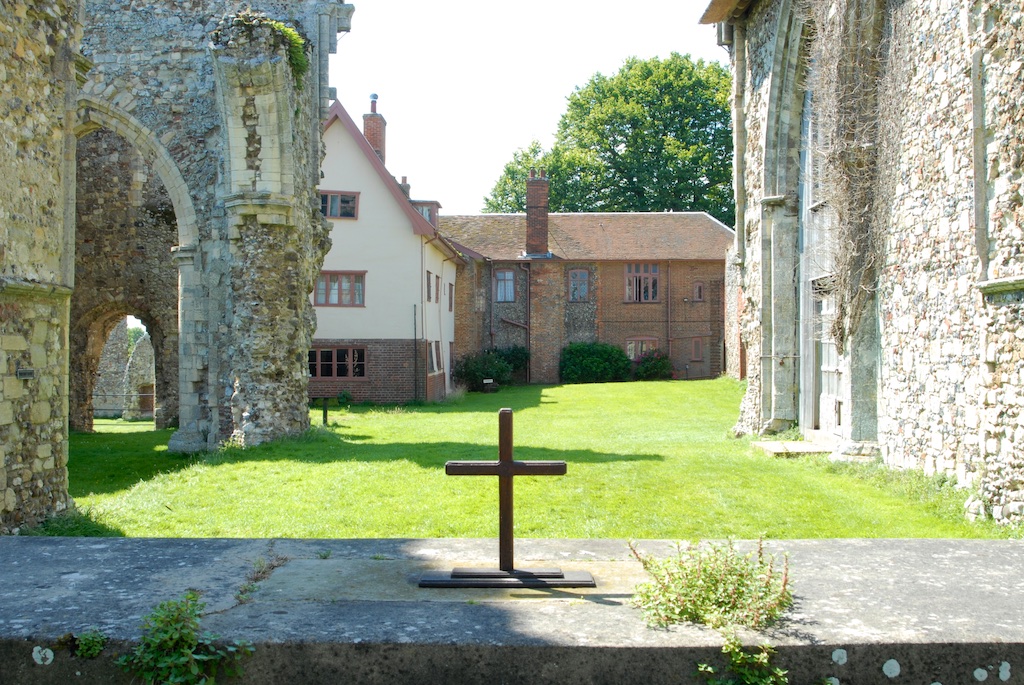
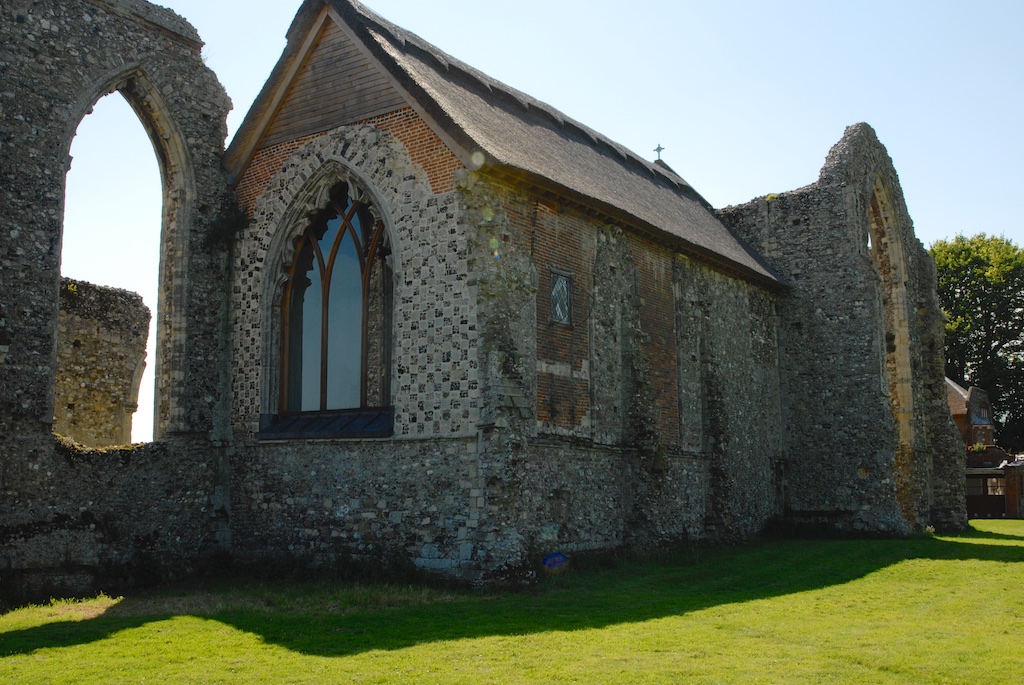
.
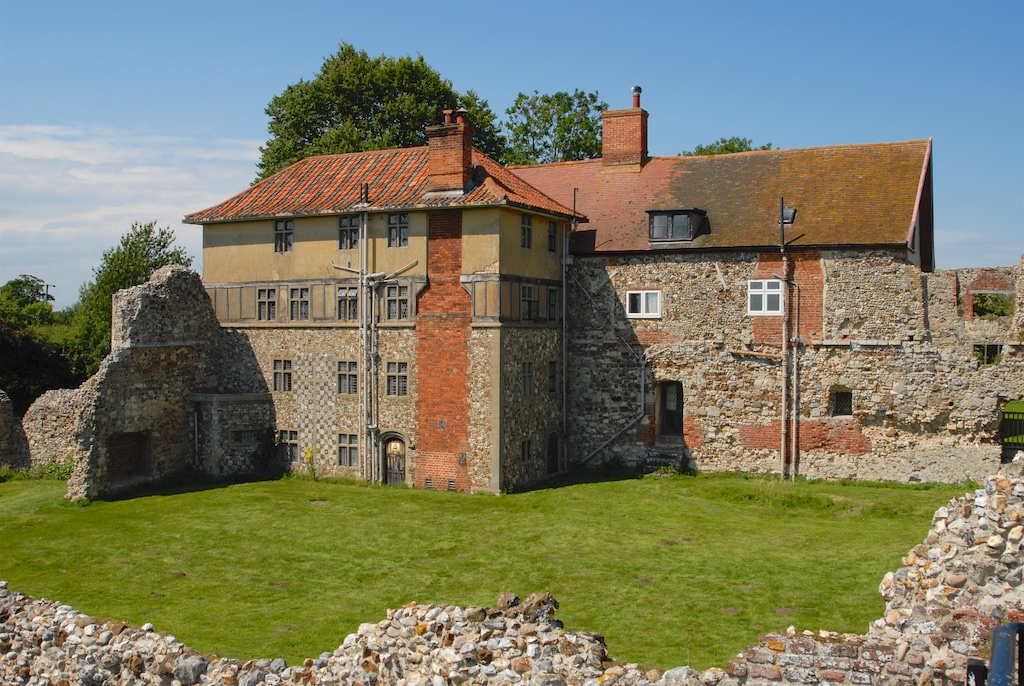
.
